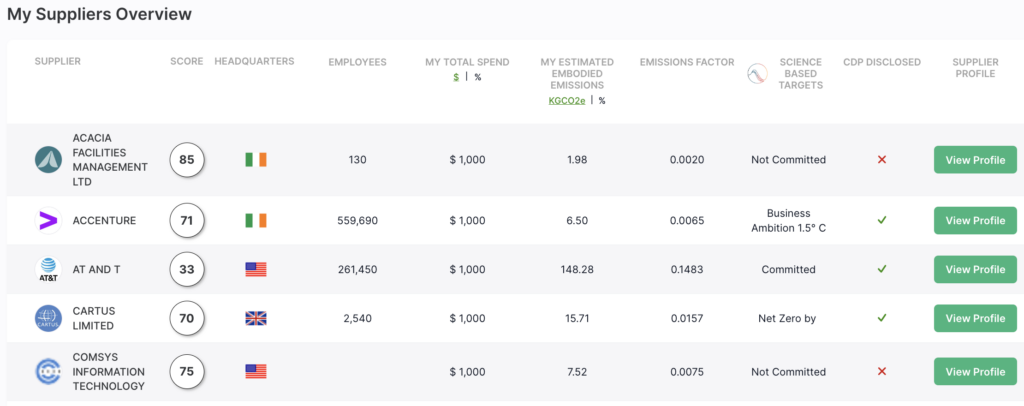More and more enterprises are getting familiar with net-zero commitments. However, whether beginner or not, it’s still very easy to get lost in translation when talking carbon jargon.
The result of this? You may lose sight of your climate superpowers.
In this post, we’ll sweep away the pitch black clouds looming over the carbon emission scopes landscape. Ready for an insightful crash course on carbon footprint?
The well-established emission scopes
Born from a partnership between non-governmental organizations (NGOs) and large enterprises, the Greenhouse Gas (GHG) Protocol is gold, or carbon if you like, standard for measuring and reporting emissions.
When publishing their corporate accounting standard in 2001, they first introduced carbon emission scopes. Based on their guidelines, the GHG emissions of your company can be divided into three scopes.
Spoiler: The higher the scope number, the more difficult it is to control and measure the relevant emissions.
Scope 1 emissions
Let’s start from the easy bit. A.k.a. direct emissions, scope 1 carbon footprint comprises the GHG associated with assets you own. These cover four types of polluting activities:
- Stationary Combustion: Just think of the boilers for heating your premises.
- Mobile combustion: For instance, the forklifts that your stuff operates to move things in and out of your warehouse. If your organization provides mobility services, you should count your fossil fuelled vehicle fleet as scope 1 emitter. Instead, as explained below, electric vehicles (EVs) emissions belong to scope 2.
- Fugitive emissions: Here we refer to fluorinated gases leaking from air conditioning and other refrigeration equipment. Even a small leak can have a massive impact, as these kinds of refrigerants warm up our planet up to 23,000 times more than CO2.
- Process emissions: GHG emissions from your factory or industrial plant.
Scope 2 emissions
Time to step up the carbon footprint game. Here we enter the indirect emissions realm.
However, although you don’t directly control scope 2 emissions sources, they’re still within your circle of influence.
A typical example in this case is the energy you use for keeping your business up and running. While you can’t manipulate the national grid, you can select a company supplying only 100% green energy.
Scope 3 emissions
Get ready to switch to carbon hero mode. Here’s where things get serious.
Scope 3 emissions are by far the heaviest carbon burden for your business. In fact, they represent up to 95% of the overall carbon footprint for some companies.
The tricky aspect about scope 3 footprint is that it’s outside your business’ carbon zone. To be more specific, they include all indirect emissions (other than those falling into the scope 2 domain) released throughout your value chain.
For instance, if you’re an EV automaker, you’re not in charge of the battery metals extraction process performed in countries like Indonesia or the Democratic Republic of Congo (DRC).
Scope 3 emissions are divided into two macro-areas, depending on whether they happen upstream (e.g., raw materials you buy from your suppliers) or downstream (e.g., customers using and disposing of your products) of your organization’s operations. Overall, scope 3 sources break down into 15 categories.
If dealing with scope 3 emissions sounds overwhelming, just check these 5 reduction strategies.
Scope 4: The new frontier of carbon emissions
Most of you may have already heard about the three above-mentioned carbon footprint areas. But many companies may not have broadened their emission scopes yet.
Scope 4 GHG emissions are commonly dubbed as climate positive or avoided emissions. These are the emissions reductions arising from the use of a low-carbon product.
Teleconferencing services are a timely example. With the upswing in remote working, scope 4 emissions are a new vista appearing on the horizon for Zoom and the likes.
But why? Well, they’re averting the transport-related emissions that smart workers would have released if they went to the office or travelled for business.
Having said that, scope 4 emissions wouldn’t be an exclusive privilege for the teleconferencing firms.
For instance, today your company may invest in some innovative technology to create a low-carbon product. In the short term, this would cause an unavoidable carbon footprint (e.g., purchase of a new piece of equipment, more products sold) that you’ll need to minimise or compensate for. On the other hand, you’ll design that product to have a lower environmental impact. Which means its future use will avoid the release of extra emissions downstream (see scope 3, category 11).
However, unlike for the other scopes, there’s still no official standard forcing or recommending your company to report avoided emissions. While this may sound like a bonus, it’s actually a missed opportunity. In fact, filling the disclosure gap would motivate your business to adopt more climate-friendly and forward-looking solutions.
But scope 4 concept goes beyond the avoided emissions remit, as it could be a useful tool to capture the energy-driven emissions disappearing from your company’s scope 2 carbon budget. That’s because remote workers will consume energy at home rather than in the office.
While you can use Ditch Carbon to track and measure scope 3 emissions, this paper will help you dig deeper on how to estimate and report avoided emissions.
Ready to get started?
We hope you now see emission scopes through a clearer lens. A focused vision of your carbon footprint is the essential first step along the reduction path.
If you’re ready to take that path, or the carbon picture in your mind is still looking blurry, just reach out – book a time to chat to us and we’ll help you get the carbon footprint of up to 250 suppliers totally free >>

